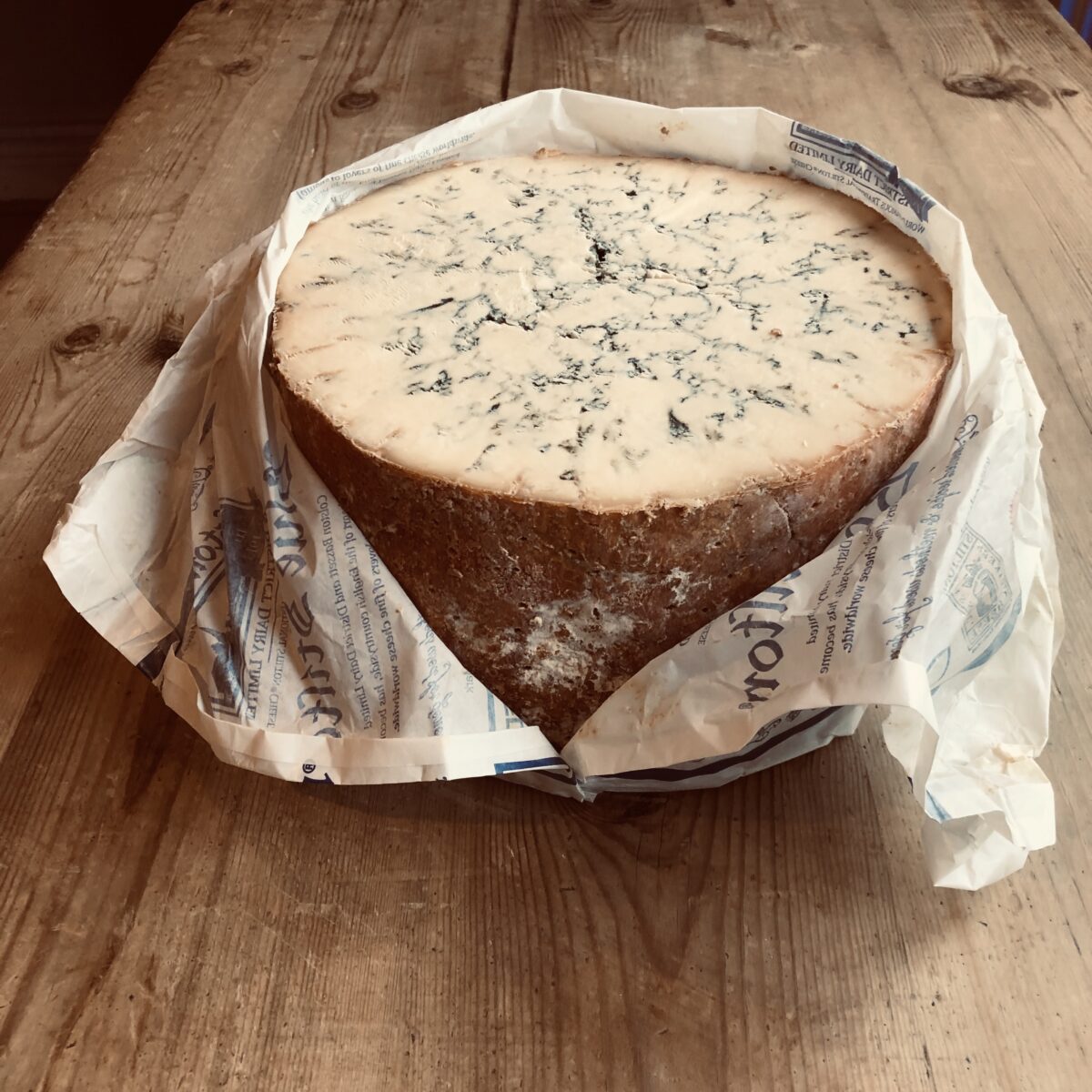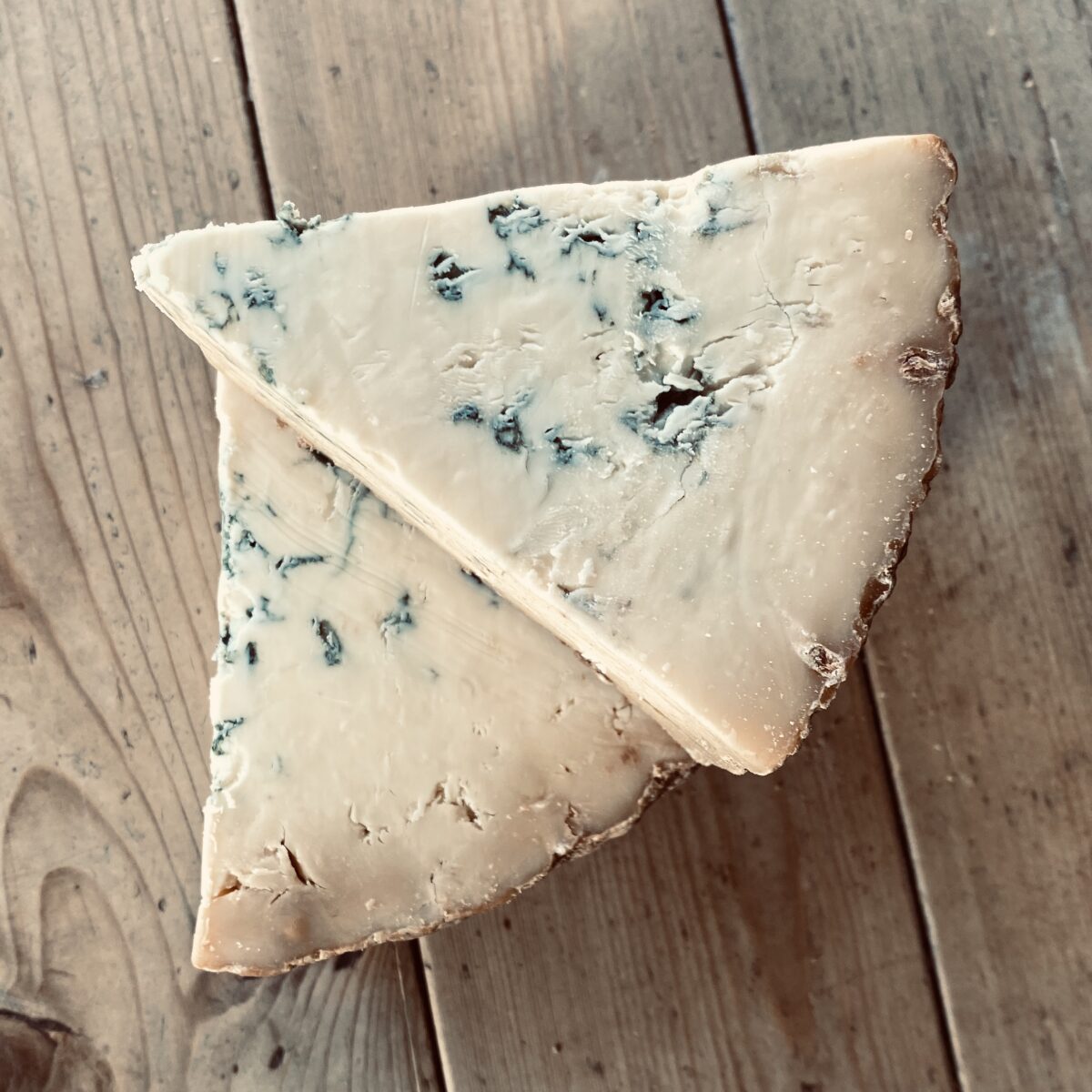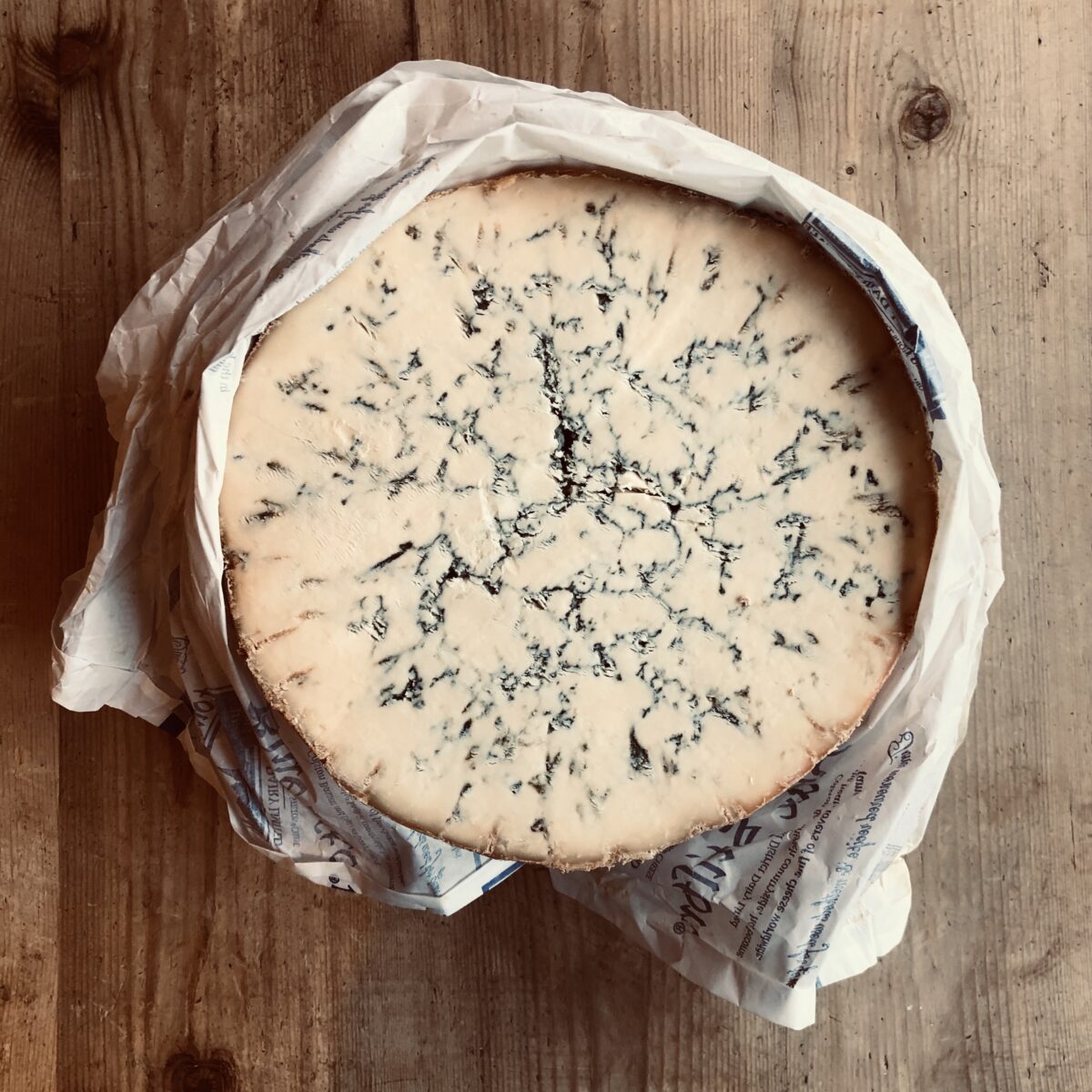How to Choose, Serve, and Enjoy the Best Stilton Cheese
The Storied History of Stilton Blue Cheese
Stilton Blue Cheese, a hallmark of British culinary tradition, traces its origins back to the early 18th century. Despite its association with the village of Stilton, the cheese was never actually produced there; instead, it was made in the surrounding counties of Leicestershire, Nottinghamshire, and Derbyshire. Stilton village, a bustling coaching stop on the Great North Road, became the eponymous hub where this delectable cheese was first popularized. The Bell Inn, a key establishment in the village, played a significant role in marketing and selling Stilton cheese to travelers.
The cheese’s production involves a meticulous process where local cow’s milk is acidified, curdled, and infused with Penicillium roqueforti to develop its distinctive blue veins. Over the years, Stilton has maintained its reputation for quality, largely due to the Protected Designation of Origin (PDO) status it received in 1996. This status ensures that only cheese produced in the specified regions, using traditional methods, can be labelled as Stilton.
Throughout its history, Stilton has seen numerous milestones, from the formation of the Stilton Cheesemakers’ Association in 1936 to its recognition as one of the world’s finest blue cheeses. Today, Stilton continues to be celebrated for its rich history, unique flavour, and the strict standards that preserve its legacy.
The Artisanal Cheese Makers of Stilton
Colston Bassett Dairy: A Tradition of Excellence

Colston Bassett Dairy, established in 1913, is a beacon of traditional Stilton cheese production. Located in Nottinghamshire, England, this dairy has been producing exceptional Stilton for over a century. Founded by a group of local farmers, the dairy continues to source its milk from nearby farms, ensuring the freshest ingredients and supporting the local community.
One of the defining features of Colston Bassett Dairy is its commitment to traditional hand-ladling methods. This labour-intensive process preserves the structure of the curds, resulting in a creamy texture that sets their Stilton apart. Each batch of cheese is matured for a minimum of 12 weeks, allowing the flavours to develop fully.
Despite advancements in cheese-making technology, Colston Bassett PDO remains steadfast in its use of traditional techniques. Their focus on small-scale production ensures that each wheel of Stilton receives the attention it deserves. Rigorous quality control measures are in place to maintain the highest standards of excellence.
Colston Bassett Stilton has garnered numerous awards, including accolades from the British Cheese Awards and the World Cheese Awards. The dairy's commitment to quality, tradition, and sustainability has solidified its reputation as one of the finest Stilton producers globally. You can buy Colston Bassett PDO here
Collingthwaite Farm: Home of Traditional Stichelton Cheese

Nestled on the historic Welbeck Estate in Nottinghamshire, Collingthwaite Farm is renowned for producing Stichelton cheese, a traditional raw milk blue cheese. Established in 2006 by Joe Schneider and Randolph Hodgson, Stichelton was created to revive the ancient cheesemaking methods used for Stilton before pasteurization became the norm. The name "Stichelton" is a nod to the medieval name for Stilton, highlighting its deep-rooted heritage.
At Collingthwaite Farm, Stichelton is crafted using raw milk from a single herd of Holstein-Friesian cows. This raw milk approach allows for a richer, more complex flavour profile, setting Stichelton apart from most modern Stiltons. The milk is combined with traditional rennet and starter cultures, and the curds are hand-ladled to preserve their integrity. After being carefully formed, the cheese is matured for 4 to 5 months, developing characteristic blue veins and a deep, nuanced flavour.
Stichelton is celebrated for its rich, earthy taste, with notes of nuttiness and a tangy finish. It has earned numerous awards and accolades, praised by cheese connoisseurs for its adherence to traditional methods and exceptional quality. Collingthwaite Farm is committed to sustainable farming practices, ensuring high standards of animal welfare and environmental stewardship.
You can buy Stichelton online here
Cropwell Bishop Creamery: A Legacy of Excellence in Cheesemaking
Nestled in the heart of Nottinghamshire, Cropwell Bishop Creamery is a family-run business with a rich history in cheesemaking dating back to 1847. Currently managed by the Skailes family, the creamery is renowned for its traditional Blue Stilton and Shropshire Blue cheeses.
the Skailes family, the creamery is renowned for its traditional Blue Stilton and Shropshire Blue cheeses.
Cropwell Bishop combines time-honoured techniques with modern innovations to produce their award-winning cheeses. Using milk sourced from local farms, the creamery ensures the highest quality ingredients while supporting the local farming community. Hand-ladling, a traditional method, is employed to preserve the curds' structure, resulting in a creamy texture that defines their cheeses. Blue Stilton is typically aged for 8 to 12 weeks, developing a smooth, tangy flavour, while Shropshire Blue, known for its distinctive orange hue, matures for slightly longer to achieve its sharper taste.
The creamery's dedication to quality and tradition has earned it numerous awards, including Gold at the International Cheese Awards and the British Cheese Awards. Cropwell Bishop is also committed to sustainability, working closely with local farmers to ensure ethical practices and environmental stewardship. This commitment extends to animal welfare and sustainable land management, reinforcing the creamery's role as a leader in responsible cheesemaking.
Modern Production Techniques for Stilton Cheese
Advancements in Cheesemaking Technology
- Modern cheesemaking facilities use automated systems for processes such as curd cutting, stirring, and mould filling. These systems increase efficiency and consistency in production.
- Technologies like robotic arms and automated presses help streamline labour-intensive tasks, allowing producers to scale up production while maintaining quality.
Integration of Traditional Methods with Modern Innovations
- Many producers combine traditional hand-ladling and maturation techniques with modern equipment to enhance precision and control.
- Innovations in climate control and ageing environments help ensure optimal conditions for cheese maturation, leading to consistent flavour and texture.
Sustainability in Stilton Production
- Sustainable practices include reducing water and energy usage, recycling whey and other by-products, and implementing renewable energy sources.
- Organic farming methods, such as avoiding synthetic fertilizers and pesticides, contribute to environmental sustainability and healthier dairy cows.
Waste Reduction and Recycling Initiatives
- Cheese producers are increasingly focusing on waste reduction, such as converting whey into high-protein products or using it as animal feed.
- Some dairies are exploring biodegradable packaging to reduce plastic waste.
Quality Control and Safety Measures
- Advanced microbiological testing and automated quality control systems help detect contaminants and ensure the safety of the cheese.
- Continuous monitoring of temperature, humidity, and other critical parameters during production and aging ensures consistent quality.
Health and Safety Regulations
- Compliance with stringent health and safety regulations, such as those set by the Food Standards Agency (FSA) and European Food Safety Authority (EFSA), is crucial.
- Regular audits and inspections help maintain high standards of hygiene and food safety.
Innovations in Ingredient Sourcing
- Many Stilton producers prioritize sourcing milk from local farms that adhere to high standards of animal welfare and sustainable farming practices.
- Ethical sourcing also involves fair compensation for farmers and long-term partnerships.
Innovative Feed and Care for Dairy Cows
- Innovations in cow nutrition, such as tailored feed mixes that enhance milk quality, are becoming more common.
- Improved care practices, including regular health checks and comfortable living conditions, contribute to better milk production.
Savouring Stilton: How Stilton is Best Served
Traditional Serving Suggestions
- Classic Pairings: Port, dessert wines, full-bodied reds, dark ales, stouts, pears, apples, figs, grapes, walnuts, almonds, whole grain crackers, crusty bread.
- Serving at Various Ripeness Stages: Young Stilton is milder and suitable for salads and light dishes, while mature Stilton has a stronger flavour ideal for cheese boards and cooking.
Modern Takes and Recipes
- Salads: Pear and Stilton Salad with mixed greens, sliced pears, crumbled Stilton, walnuts, and honey vinaigrette; Beetroot and Stilton Salad with roasted beetroot, arugula, crumbled Stilton, and balsamic dressing.
- Soups: Stilton and Broccoli Soup; Stilton and Cauliflower Soup.
- Main Dishes: Stilton and Mushroom Risotto; Beef Fillet with Stilton Sauce.
- Desserts: Stilton Cheesecake; Pears Poached in Port with Stilton.
Expert Tips for Serving and Storing Stilton
- Proper Storage Techniques: Store in the coldest part of the fridge, wrapped in wax paper or foil, and keep away from strong-smelling foods.
- Serving Temperature and Preparation Tips: Bring Stilton to room temperature before serving to enhance its flavour and texture; use a wire cheese cutter or a sharp knife to avoid crumbling.
The Cheese Society Cafe: A Haven for Cheese Enthusiasts
Located in the heart of Lincoln, The Cheese Society Cafe has been a beloved destination for cheese lovers since its establishment in 1997. Combining a cosy restaurant eatery with a well-stocked cheese shop, The Cheese Society offers a unique experience that celebrates artisanal cheeses, including renowned varieties of Stilton.
The restaurant’s menu features an array of dishes that highlight their extensive cheese selection. Popular items include the Stilton and Walnut Salad, Cheese Fondue, and Grilled Cheese Sandwiches with Stilton. Emphasizing the use of seasonal and locally sourced ingredients, The Cheese Society ensures freshness and supports local producers. The cosy and inviting ambience, with its rustic decor, makes it the perfect spot for cheese enthusiasts to indulge in their favourite dishes. See the menu here
In the cheese shop, visitors can explore a diverse selection of British and international cheeses, with a special focus on artisanal and locally produced varieties. Stilton lovers will find Colston Bassett Stilton, Cropwell Bishop Stilton, and Stichelton among the offerings. The shop also sells a range of accompaniments such as chutneys, crackers, and wines, as well as cheese-themed gift baskets and hampers.
The Cheese Society regularly hosts cheese-tasting events and workshops, providing participants with the opportunity to sample a variety of cheeses and learn from experts about cheese pairings and flavour profiles. Their website features an online shop and information on upcoming events, while their active social media presence keeps customers updated on new products and special offers.
The Cheese Society's Online Shop
For those unable to visit Lincoln, The Cheese Society offers a convenient online shop that brings their exceptional selection of cheeses directly to your doorstep. The online shop features over 40 artisanal English cheeses, including the finest Stilton Blue Cheese. In addition to their English offerings, The Cheese Society also provides a curated selection of French, Italian, and Swiss cheeses, allowing cheese lovers to explore and enjoy a diverse array of flavours from the comfort of their own home. Whether you are looking for a classic Stilton, a creamy Brie, or a robust Parmigiano-Reggiano, The Cheese Society’s online shop has something to satisfy every palate.
Conclusion: The Enduring Legacy of Stilton Blue Cheese
Stilton Blue Cheese remains a testament to the rich history and artisanal craftsmanship of British cheesemaking. From its origins in the early 18th century to its modern-day production, Stilton has consistently been celebrated for its unique flavour and high quality. The dedication of artisanal producers like Colston Bassett PDO Dairy, Collingthwaite Farm Stichelton, and Cropwell Bishop Creamery ensures that this iconic cheese continues to be enjoyed by cheese lovers around the world. Whether savoured in traditional pairings or innovative recipes, Stilton Blue Cheese's legacy endures, inviting us all to appreciate the art and passion behind every wheel.

